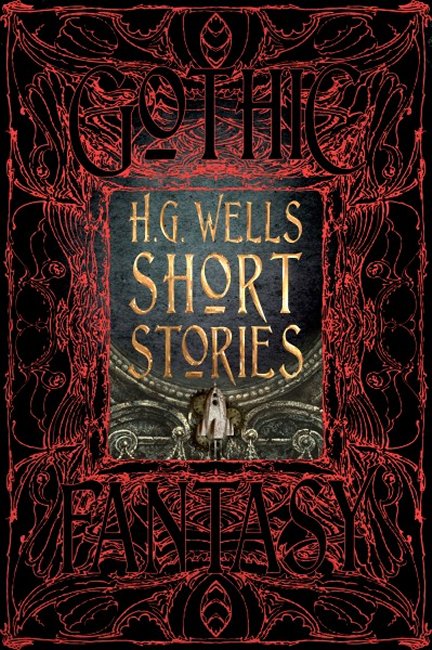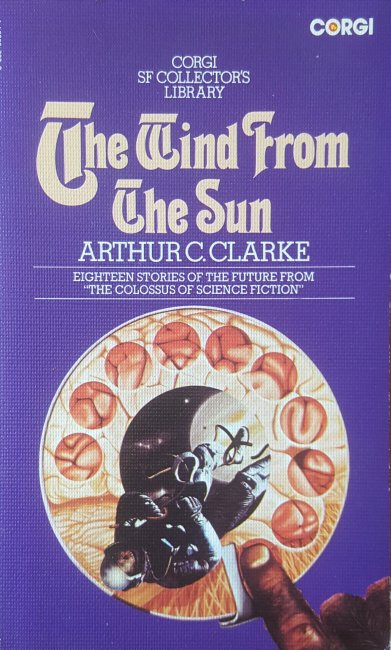The Club of Queer Trades is an organisation that only admits members who earn their living from a unique perspective. Having come up with this concept Chesterton wrote six excellent short stories based around a narrator called Charlie “Cherub” Swinburne, his friend, and retired judge, Basil Grant and Basil Grant’s younger brother Rupert Grant who is a private detective. Between them they experience several odd encounters with The Club.
In the individual reviews below I’m just going to set up the unusual story in each one to avoid giving away the queer trade and the denouement of each tale.
The Tremendous Adventures of Major Brown
Major Brown is a perfectly respectable retired military gentleman whose passion is growing ever increasing varieties of pansies so when he is encouraged by a vendor of such plants to look over a wall near where he lives and sees spelt out in a bed of pansies “Death to Major Brown” he is more than a little perturbed. He enters the house, finds a rather unusually decorated room and speaks for a while with a somewhat enigmatic woman before hearing a noise and confronting a large man in the cellar, they fight and Major Brown comes away with the mans coat as the man himself escapes. Totally confused by his experiences the Major comes to consult Rupert Grant, who suggests that they should go to the address found on an envelope in one of the coats pockets. When they do this, instead of the confrontation expected by Rupert, the Major is simply presented with an invoice.
The Painful Fall of a Great Reputation
This story is quite a bit simpler than the first in that it revolves around a character called Mr Wimpole who has developed a reputation as a great wit at dinner parties in London if a rather cruel one as witnessed by Basil and Charlie when they pay a call on Lord Beaumont one evening. They are still in the hallway when after a gale of laughter from the dining room Sir Walter Cholmondeliegh emerges.
“Now, my dear chap,” began Lord Beaumont hastily.
“I tell you, Beaumont, I won’t stand it,” exploded the large old gentleman. “I won’t be made game of by a twopenny literary adventurer like that. I won’t be made a guy. I won’t—”
Upon being calmed down and re-entering the dining room it is clear from another bout of laughter that Cholmondeliegh had been made a fool of again.
But what is really going on here? It’s not what it seems to be.
The Awful Reason of the Vicar’s Visit
Rupert was dressing for dinner, for he was due to go out with Basil when the Reverend Ellis Shorter unexpectedly called on him, apparently at the suggestion of Major Brown. He had a very strange tale of being set upon and forcibly being dressed as an old woman and made to commit a crime at gun point by a group of five apparently old women who were in reality cross dressed younger men. The vicar was bald headed and with substantial whiskers but these were concealed by the poke bonnet he was forced to wear, the abduction was apparently carefully planned. He had only finally escaped from them when they walked past a policemen and he pretended to be drunk so that the officer would take an interest in what was going on.
All this took a long time to explain as the Rev. Shorter was very unlike his name and was surprisingly long winded in telling his tale so that there was no chance for Rupert to go to his acquaintances home for dinner and indeed Basil would probably be already back at his home so he suggested going to see him only to find that he had also not made it to the meal as he had been called on by an elderly vicar with an unbelievable tale. Just what was going on? Basil had already worked it out.
The Singular Speculation of the House-Agent
Lieutenant Drummond Keith was an interesting character and like Major Brown a retired military man but not as successful in rising through the ranks as the Major, this means that he is also quite poor and like a lot of the poor moved around London from rented property to rented property struggling to find one he can both afford and enjoy. He had few possessions indeed we are introduced to him by means of this small collection of items.
He carried from house to house and from parish to parish a kit which consisted practically of five articles. Two odd-looking, large-bladed spears, tied together, the weapons, I suppose, of some savage tribe, a green umbrella, a huge and tattered copy of the Pickwick Papers, a big game rifle, and a large sealed jar of some unholy Oriental wine. These always went into every new lodging, even for one night; and they went in quite undisguised, tied up in wisps of string or straw, to the delight of the poetic gutter boys in the little grey streets.
I had forgotten to mention that he always carried also his old regimental sword. But this raised another odd question about him. Slim and active as he was, he was no longer very young. His hair, indeed, was quite grey, though his rather wild almost Italian moustache retained its blackness, and his face was careworn under its almost Italian gaiety. To find a middle-aged man who has left the Army at the primitive rank of lieutenant is unusual and not necessarily encouraging. With the more cautious and solid this fact, like his endless flitting, did the mysterious gentleman no good.
We meet the Lieutenant as he calls on and also borrows £100 from Basil who seems to regard him as a good friend, and he then says he is heading to his house agent. Rupert however is not convinced that Drummond is all that he seems and insists on going to the agent with him much to the irritation of Drummond who nevertheless acquiesces. After a short meeting with Mr Montmorency regarding his new property they leave and Drummond is caught up in a street brawl which Rupert incorrectly accuses him of instigating. The policeman who takes his address later reports that there is no such house as The Elms, Buxton Common, near Purley, Surrey. So where is our mysterious Lieutenant? Basil is sure he can find him.
The Noticeable Conduct of Professor Chadd
This story is an outlier, as I fail to see how Professor Chadd would raise an income from his eccentricity so he cannot be regarded as a member of The Club. Indeed the professor had invented a new language where he expressed himself via dance, nowadays interpretive dance is well known but this may be the first time it is described in literature.
The Eccentric Seclusion of the Old Lady
In this final tale Rupert and Charlie are walking along a quiet road in London when they hear a female voice from a basement saying “When shall I get out? When shall I get out? Will they ever let me out?” Upon being rebuffed by the gentlemen living in the house they determine to return with Basil who doesn’t seem in the least concerned regarding the lady in the cellar and appears to strike up friendly terms with the two homeowners. Rupert and Charlie are concerned however and decide to take the men prisoner whilst they rescue the woman. This they duly due in an unintentionally comic manner with Basil assisting in the conflict but when they make their way down to the basement the lady refuses to leave her captivity and it is only when Basil also descends that she agrees to go.
This story has a surprise ending, set several months after the apparent end of the tale where it is finally revealed whose queer trade had led to the locking up of the old lady and the reason for her initial refusal to be rescued. I loved this final twist so I’m not about to give it away here.
The short stories originally appeared in Harpers Weekly between December 1903 and July 1904 before being first published as a collection by Harper and Brothers in 1905. My copy is the Penguin Books first edition from October 1946 which is in remarkably good condition for a paperback book that is approaching its 77th birthday and which is printed on the fairly poor paper stock still in use this close to the end of the war. I have previously reviewed one of Chesterton’s earliest novels ‘The Napoleon of Notting Hill‘ written in 1904 but which was set in 1984 and which inspired George Orwell to also set his classic dystopian novel published in 1948 in the same year. Almost a hundred years after its first publication The Club of Queer Trades is still in print which I suggest says a lot for its quality and I have to agree. Chesterton wrote many superb books along with hundreds of short stories, several of which have disappeared out of print over the years but his best are still easily available. At some point in the future I will cover the five volumes, plus a few uncollected tales, of Father Brown short stories for which he is nowadays most famous but I recommend him as one of those rare authors where if ever you encounter one of his books it is almost certainly worth reading. Oh and as for Professor Chick and his own new trade, he is never mentioned again after the introduction so I have no idea what he did.


















